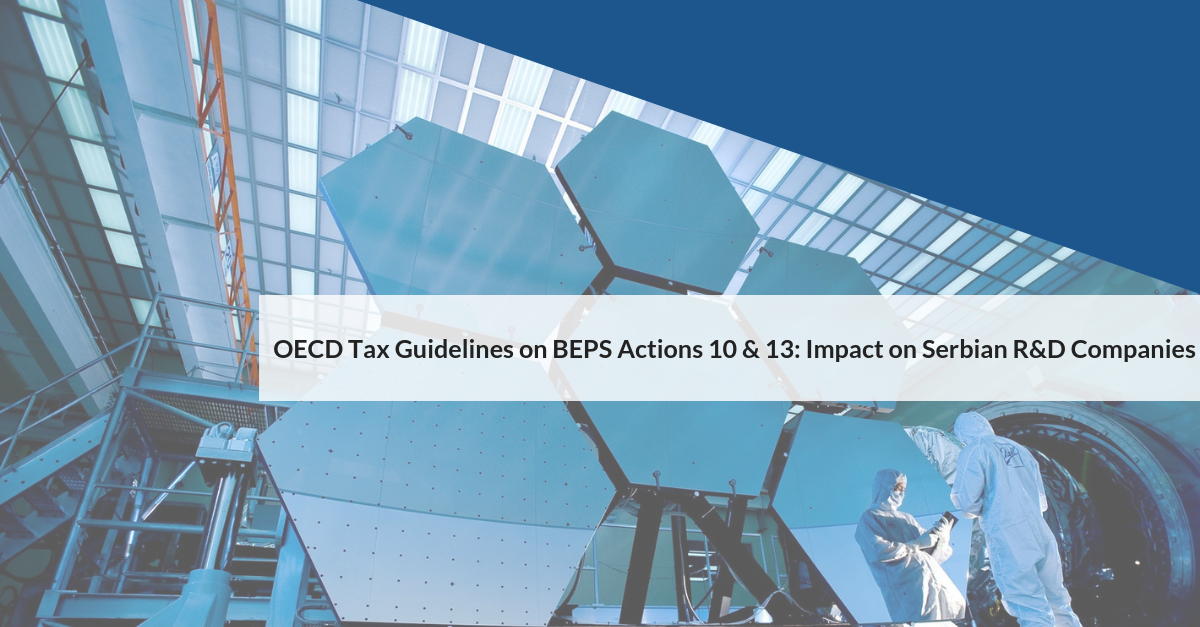Serbia is among the countries that have in general adopted standard transfer pricing methods as a mandatory part of the Corporate Profit Tax Act, among those also profit split methods. Cost sharing arrangements (CCA) is one of the approaches used within profit split methods that were commonly used by multi-national groups (MNE) to cover for transfer pricing verification, especially intellectual property (IP) related (i.e. in every situation where it is likely that the outcome of research and development (R&D) activity will be implemented towards the registration of patents or operating software).
The original interpretation of the CCA under OECD tax guidelines
The OECD Guidelines on Transfer Pricing for MNE originally defined CCA as the approach of measuring the contribution of each member of the international groups by the volume of expenses incurred in terms of development and implementation phase. The benefits, i.e. remuneration or participation in earnings from the product of development should be proportional to participation i.e. cost contribution.
Most of MNE that could not provide world-wide coverage of transfer pricing in any other way have been applying CCA in a manner that each part of the group that was contributing to the development was claiming ownership rights and deserving the part of product income harvested.
How did BEPS actions 10 & 13 affect the “correctness” of CCA?
Firstly, BEPS Action 13 effects, especially country-by-country reporting have provided better information source for the tax authorities worldwide, increasing the need for usage of advance pricing arrangements (in jurisdiction that apply this mechanism) and upfront defense mechanism against the tax control that can also due to statute of limitation cover previous fiscal years.
Secondly, BEPS Action 10 turns the key of profit split from investor-function to value creation chain, meaning that R&D functions take the lead from the formal ownership over the intellectual property created (since there is a „leading company“, most commonly the formal investor that gets to register the product).
Identification of value drivers per new approach may lead to identification of the “malfunctions“ in some CCAs created in previous years. In effect, the split of profits per value drivers might differ compared to standard cost contribution approach requiring the remeasurement of remuneration to group members.
How can Serbian companies benefit from this?
Although Serbia is not a full OECD member and is not officially implementing BEPS related instruments, Serbia-based entities are parts of MNEs, hence, are included in CCAs and by shifting the importance and star-treatment from the investor to R&D companies in terms of transfer pricing also of high relevance in structuring the transfer pricing framework of the MNEs. Since there is a requirement to place higher remuneration onto R&D entities, in order to eliminate the transfer pricing effect and to possibly use the opportunity to re-model the CCA set-up or switch to different kind of agreements, MNEs are also thinking of possibility of actual territorial shifting of functions (and the level of investments) that brings tax optimal structure. Also, leading investor countries, such as Germany, are aligning their tax guidelines with the OECD standards.
Proposed changes to the Serbian Corporate Profit Tax Act also include recognition for tax purpose of the doubled amount of the actually incurred R&D expenses, as well as tax exemption of net income arising from the lease of authorship rights or patents (net income = income – historical development expenses). Together with the past decade of good experience of MNE with local development centers (subsidiaries or a group of independent agents) in Serbia in IT industry, this might give some boost to expansion of importance of such investments and providing the basis for further tax optimization in MNE structures.






